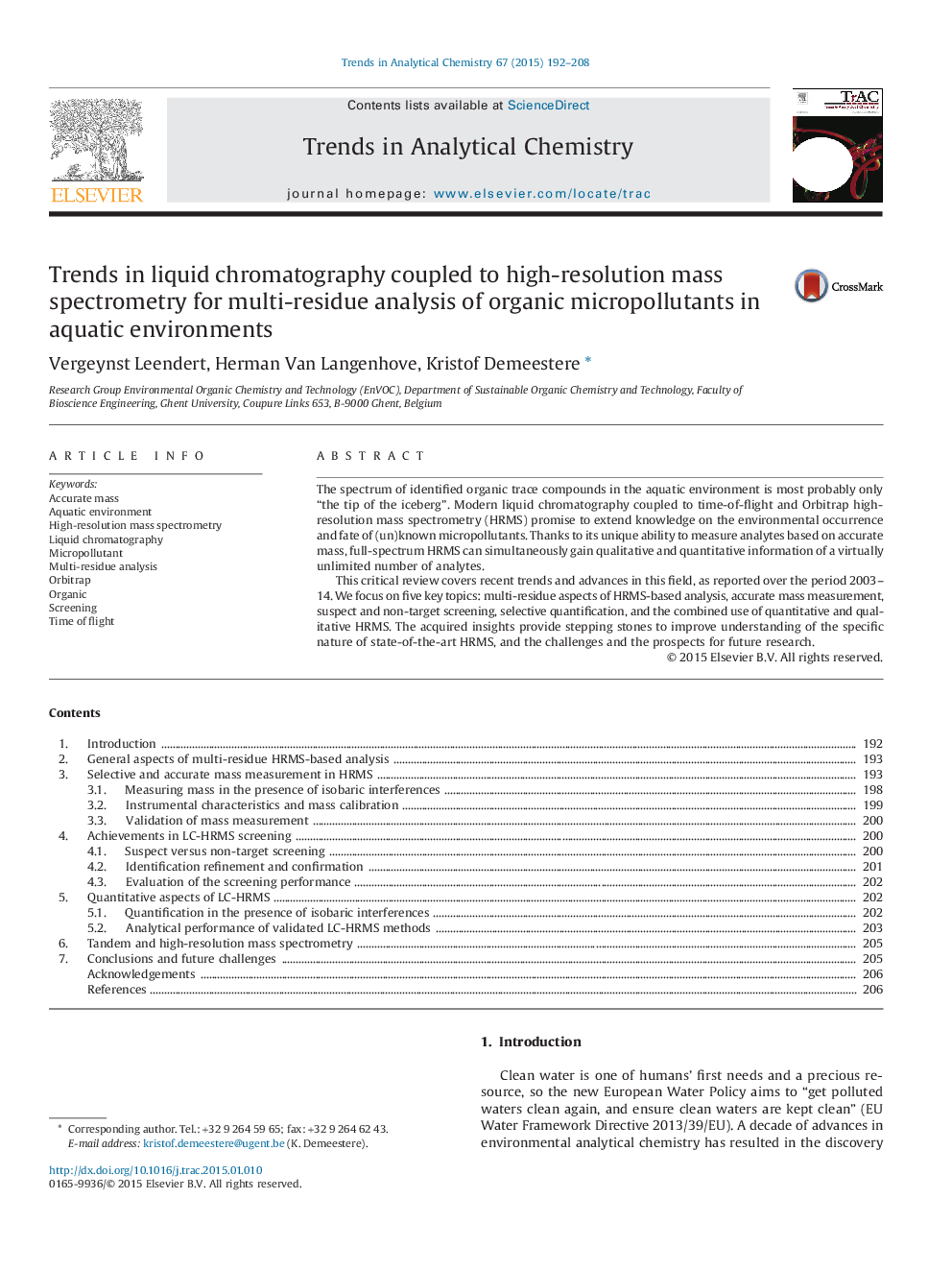| Article ID | Journal | Published Year | Pages | File Type |
|---|---|---|---|---|
| 1247869 | TrAC Trends in Analytical Chemistry | 2015 | 17 Pages |
•Multi-residue aspects of analysis based on high-resolution mass spectrometry (HRMS).•Resolving power is a key factor for selectivity and mass accuracy in HRMS.•Screening for environmentally-relevant contaminants needs integrated approaches.•Reducing false negatives and false positives in screening is challenging.•Resolving power, sensitivity and matrix effects are related in quantitative HRMS.
The spectrum of identified organic trace compounds in the aquatic environment is most probably only “the tip of the iceberg”. Modern liquid chromatography coupled to time-of-flight and Orbitrap high-resolution mass spectrometry (HRMS) promise to extend knowledge on the environmental occurrence and fate of (un)known micropollutants. Thanks to its unique ability to measure analytes based on accurate mass, full-spectrum HRMS can simultaneously gain qualitative and quantitative information of a virtually unlimited number of analytes.This critical review covers recent trends and advances in this field, as reported over the period 2003–14. We focus on five key topics: multi-residue aspects of HRMS-based analysis, accurate mass measurement, suspect and non-target screening, selective quantification, and the combined use of quantitative and qualitative HRMS. The acquired insights provide stepping stones to improve understanding of the specific nature of state-of-the-art HRMS, and the challenges and the prospects for future research.
